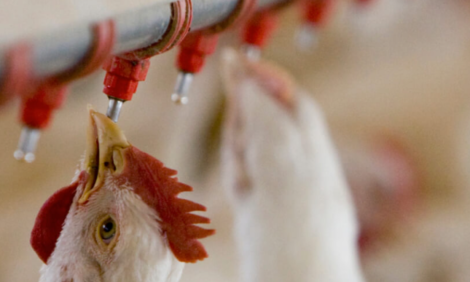



Central America: Very Real Avian Influenza Worries
ANALYSIS – The highly pathogenic H7N3 Avian Influenza (AI) that is circulating in Mexico is of great concern to the Central American poultry industry, particularly Guatemala. This was evident during the XXIII Latin American Poultry Congress which took place last week in El Salvador, writes Senior Editor Chris Wright.The Congress itself was quite successful with close to 2,500 participants from all over Latin America, but particularly from Central America. The scientific conferences were well attended, especially those that dealt with Avian Influenza in Mexico, as well as those that dealt with treating poultry wastes.
Speaking with many poultry producers during this Congress, it is very evident that there is a great fear in Central America that the H7N3 Avian Influenza that has circulated in Mexico since mid-2012 will reach them. This virus has done an enormous amount of damage to the Mexican poultry industry.
There are legitimate reasons for this fear, from a Central American perspective. In the first place, in spite of all the early efforts taken in Mexico, the disease has not been controlled. The disease originated in the egg production center of the country, in the state of Jalisco in June 2013 and has now been identified in four other states, some very far away from the original location of the outbreak.
Although no new outbreaks have been reported since August 2013, no one is really sure where the virus is right now.
Black Market Eggs
In the second place, the black market contraband of shell eggs from Mexico to Guatemala has existed for a great many years. This contraband is not supported by the poultry producers on either side of the border rather it’s run by professional black- marketers, who know how to move good across the border without being caught by the authorities. This is no secret, it has been known for well over a decade (at least).
One of the Mexican speakers showed pictures of a raft made out of used automobile tires which is used for moving eggs across the Suchiate River, which marks the southernmost border between Guatemala and the state of Chiapas in Mexico.
This egg contraband from Mexico to Guatemala has had a detrimental effect on the Guatemalan egg sector, since they find it hard to compete against contraband eggs.
Seeing that it was in laying hens where the Avian Influenza outbreak in Mexico started, the contraband eggs from Mexico present a very real risk for Guatemala. And we now know that this virus also affects broilers and broilers breeders; although there was an early misconception in Mexico that this virus only affected egg layers in production. Therefore, the entire Guatemalan poultry industry could be at risk.
Guatemala’s Measures
Once in Guatemala, it is not difficult to imagine that this Avian Influenza virus could easily move into the rest of Central America, simply because of the heavy commerce and movement that exists between the countries in the region. While there is poultry commerce among the nations in the region, it is the “normal” traffic which is just as worrisome.
What is Guatemala doing to prevent the entry of AI? At this point the government has not authorized the use of AI vaccines.
The producers should be strengthening their biosecurity measures. There are also indications that commercial birds in Guatemala are being vaccinated against Avian Influenza. This is something that is difficult to confirm, but is reported by sources who know the regional industry well.
Vaccine Efficacy
The AI vaccines are another of the issues which confronts Mexico. The vaccine being used, which was produced very quickly after the 2012 outbreak and proved to be very effective at the start, now seems to have lost its efficacy. The original plan was to give two doses to layers (and later on in the outbreak, two to breeders and one to broilers).
But today the long lived birds are getting four or even five vaccine doses to protect them. This is not a new concern from Mexican producers, they have been complaining about the loss of vaccine efficacy since at least May of this year.
For the Mexican poultry industry it’s evident that H7N3 AI is there to stay. They must figure out a way to live with it on a permanent basis. Some producers are looking for permanent solutions in other countries, in order to assure they have an adequate supply of layer and breeder pullets. .
For the Central American poultry industry, H7N3 Avian Influenza represents a very real danger, and the industry needs to do everything in its power right now to prevent the arrival of the virus. However, one can legitimately ask whether it’s just a matter of time. So, it may not be “if”, but rather, “when?”









